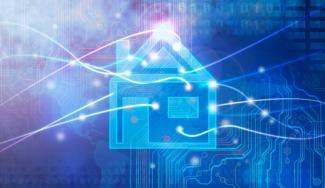
Instructions
Do the preparation task first to help you with the difficult vocabulary. Then read the article and do the exercises to check your understanding.
People taking care of the elderly or sick at home may get help from the house itself.
Big changes
The beginning of the 21st century saw a revolution in home-living with new technology changing the places where we live, from the wireless internet to TV screens that hang on walls, and it seems technology could be changing our homes again. A project conducted by Johann Siau, Senior Lecturer at the University of Hertfordshire’s School of Engineering and Technology, builds on the University’s InterHome project – aiming to create a home that monitors people living at home who are frail or elderly.
The InterHome
‘We’ve developed a wrist-band type device,’ says Johann Siau, ‘which allows us to monitor the condition of an elderly person, or whoever is wearing the device. It allows us to collect data of a person, to detect if the person has fallen or is away from where they are supposed to be. It connects an elderly person with an assisted-living type device with the InterHome.’ The assisted-living project is part of the University’s wider InterHome project, which is the development of a smart house. The house stores the usage patterns of the person living there and can adapt to make it as energy efficient as possible. ‘Linking the two together, and building the service element, allows us to introduce the assisted-living idea to care for the elderly. It’s very important that these technologies are there to help and support rather than to replace any of the existing services.’
Built from zero
The InterHome is not just a prototype (a doll’s house at the moment) or a vehicle for research, it’s a study tool where students from a range of scientific disciplines get to learn and develop technology. The InterHome incorporates the latest broadband technology, mobile data and communication. Researchers and students make sure all the technology works together. ‘We’ve used this to teach our undergraduate students, as well as our postgraduate students, and gives us the flexibility to be able to design our systems because the hardware and software is developed in-house.’ It requires a variety of skills from students – electronic engineers, embedded-system engineers, computer students, design students. ‘The current plan we are working on is a smart home project in Watford with some commercial companies,’ says Johann Siau. ‘We are looking at how a smarter home can provide extra value services.’
What do you think houses are going to be like in the future? Will we all live in smarthomes?

Comments